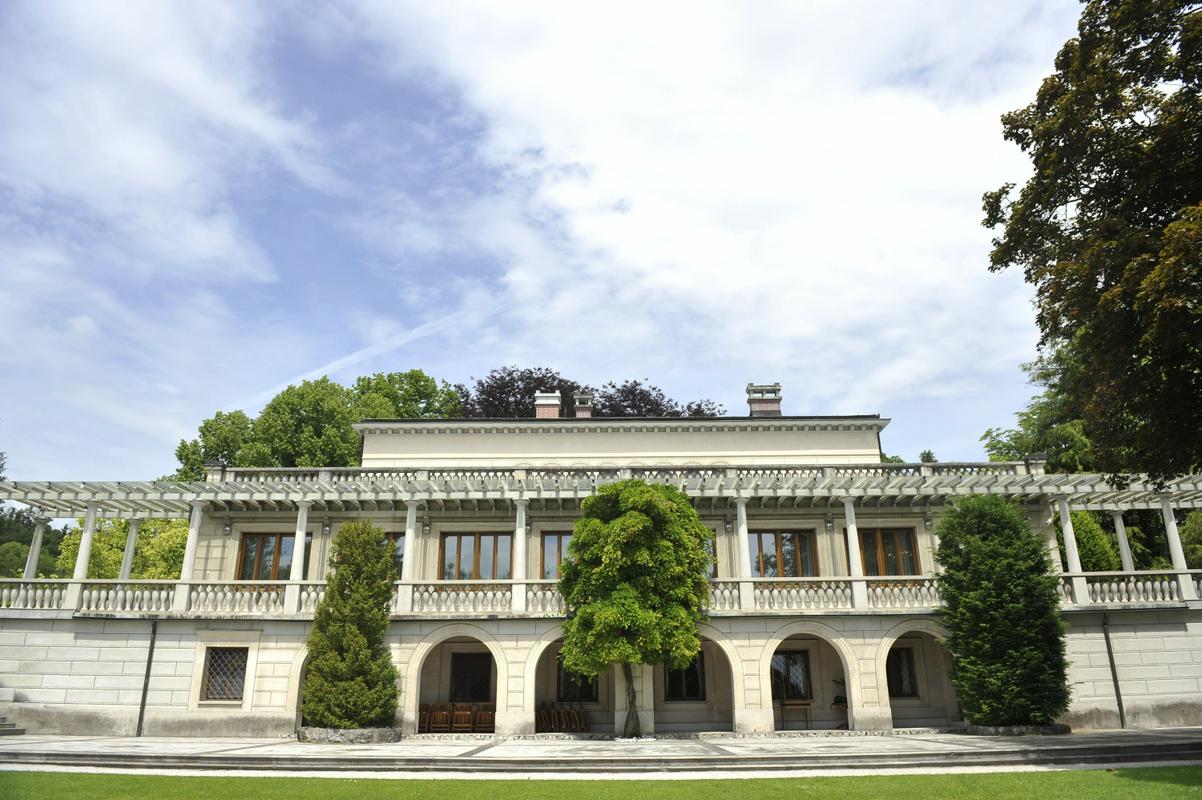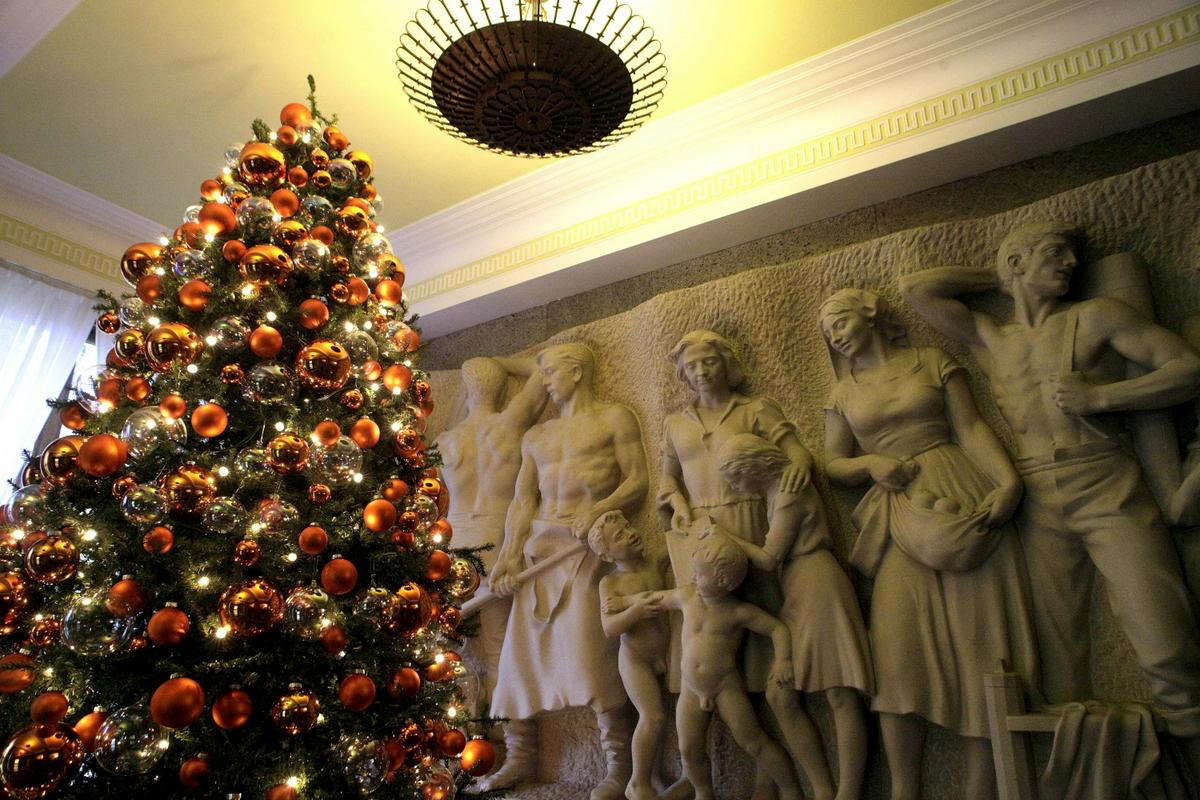

A house belonging to the Zois family of nobles and polymaths one stood beneath Ljubljana’s Rožnik Hill, on the spot of what is now Villa Podrožnik. Later, in the 19th century, a building there even briefly served as a restaurant.
Much of the present-day villa dates back to the ownership of Franc Kollmann, a wealthy industrialist who made his fortune by selling glassware and porcelain – a colorful character known, among other things, for giving children car rides in one of Slovenia’s first automobiles. At the beginning of the 20th, century he had a villa built on his newly purchased property. Designed by the architect Ciril Metod Koch, the residence was built in the Viennese Secession style – an Austrian version of Art Nouveau – and featured a prominent turret, which gave it the nickname “Kollmann’s Castle.”
When Franc ‘s son Robert Kollmann died, he decided to leave one half of Villa Podrožnik to the blind and the other to impoverished merchants. During World War II, the Kollmanns’ former villa was briefly turned into a hospital. After the war, it was nationalized by the Communists and completely renovated by architect Vinko Glanz. The turret was removed, and the building’s appearance was changed radically. The resulting structure, designed for government use, included several dining rooms, four bedrooms, and an extensive library. A pool and a tennis court were also added to the property.
In 2007, the newly sworn-in President Danilo Türk proposed turning Villa Podrožnik into the country’s first presidential palace – a Slovenian version of the White House. His suggestion was seriously considered, but in the end, the government decided that the villa should be put to other uses. Today, it hosts state ceremonies, while its splendor reflects the very different eras that have shaped Ljubljana’s architecture – and Slovenia itself.


































































